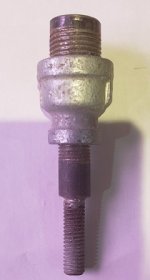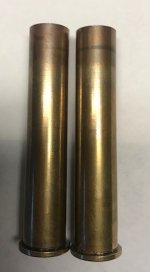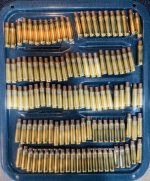Not everyone can or will buy an annealing machine.
After using my fingers for a while, I was graduated to using this homemade fixture made from hardware store components, that is used along with a cordless drill. It holds the brass, rotates it easily, protects the base from the flame and acts as a heat sink.
Set the flame and the distance from the flame, and after a predetermined time count rotating in the flame (that can be determined using Templilaq) , drop the brass onto a cloth or into water if you're so inclined.
Not as precise as a machine I suppose, but is still effective.
After using my fingers for a while, I was graduated to using this homemade fixture made from hardware store components, that is used along with a cordless drill. It holds the brass, rotates it easily, protects the base from the flame and acts as a heat sink.
Set the flame and the distance from the flame, and after a predetermined time count rotating in the flame (that can be determined using Templilaq) , drop the brass onto a cloth or into water if you're so inclined.
Not as precise as a machine I suppose, but is still effective.
Attachments
Last edited:









































































